Jade Forest Store
 U.S. Shop for Products from John Loupos
U.S. Shop for Products from John Loupos
Books | DVDs | CDs | Thomas Hanna Items | Optimal Health
Books by John Loupos
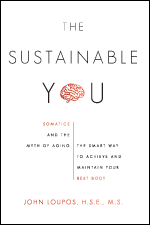 |
The Sustainable You – Somatics and the Myth of Aging – $16.95NEW! – Now Shipping: Sifu John Loupos’ latest book, “The Sustainable You – Somatics and the Myth of Aging” is now in stock and available for purchase. (more…) |
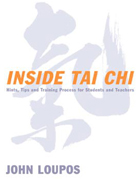 |
Inside Tai Chi – $21.95Hints, Tips, Process and Training for Students and Teachers. Inside Tai Chi will prepare anyone taking the journey for what to expect along the way, offering practical advice, observations, training exercises and detailed discussions on the learning process. (more…) |
 |
Exploring Tai Chi – $21.95Contemporary Views on an Ancient Art. Exploring Tai Chi helps students to understand the intricacies of Tai Chi training as well as the underlying motives and psychological processes involved in any ongoing practice of this ancient discipline. (more…) |
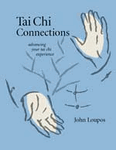 |
Tai Chi Connections – $21.95Advancing Your Tai Chi Experience. This book looks deeply into Tai Chi’s technical intricacies and nuances, offering guidance and practice tips, replete with step-by-step directions, on how to bring your Tai Chi to a higher level of correct execution. (more…) |
DVDs & Other Media by John Loupos
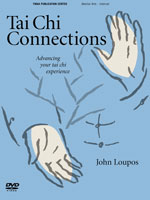 |
Tai Chi Connections (DVD) – $29.95In this Tai Chi Connections DVD, Master-Teacher John Loupos teaches a traditional Yang style Tai Chi Chuan (taijiquan) form, with a unique emphasis on revealing the underlying principles that characterize higher level Tai Chi practice, no matter what style of Tai Chi you’re interested in studying. (more…) |
CDs by John Loupos (also available as electronic media on request)
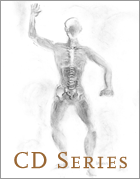 |
Smooth Moves for Savvy Shoulders – $20.00This excellent movement series will address chronic or acute pain and muscular tensions in the back, waist, shoulders, and arms to restore a freer overall movement and fuller sense of voluntary control. (more…) |
 |
A Zillion Points of Contact – $20.00In this learning series John Loupos introduces a sixth installment to his expanding repertoire of original Somatics movement patterns. Utilizing the body’s natural boney prominences, along with their associated muscular attachments, the lessons in A Zillion Points of Contact will have you standing straighter and taller with an enhanced postural awareness. (more…) |
 |
Functional Differentiation of the Lumbar, Thoracic, & Cervical Spine – $20.00If twisting to look behind now entails a more concerted effort… if turning your head to either direction has devolved from a near automatic motion into one necessarily slower and more thought-out, perhaps even a whole body affair, than this CD series is for you. (more…) |
 |
Where Breath Meets Qi: Perineal Breathing & More – $20.00Get Your Qi Unstuck & Improve Your Libido. This unique approach to conscious and conscientious breathing and somatic organization makes for an invaluable practice adjunct for anyone involved in mindful disciplines, whether it be yoga, Tai Chi, Qigong, meditation, or just living in your body in the best way you can. The lessons in this learning series offer a truly unique blending of some of the best and most healthful methods drawn from the traditions of East and West. (more…) |
 |
Swaying in the Breeze – $20.00For Improved Balance & Proprioception. Ideal for Tai Chi’ers, Yoga enthusiasts, and anyone involved in a sport or fitness discipline that calls for unerring balance and agility, as well as for persons whose natural sense of balance and proprioception has been compromised due to age or injury… this learning series will help you to stand straighter and to organize and move your body with more surety and certitude. (more…) |
 |
Swimming in All Directions to Free Your Shoulders – $20.00Differentiated Movements for Your Elbows & Scapulae. Ideal for Tai Chi’ers, The title of this Somatics learning series is in homage to an early metaphor for Tai Chi – “Swimming in the Air.” Constrained movement of the shoulders is widespread in today’s world, and a source of genuine concern not only for Tai Chi enthusiasts, but for dancers, yogis, and athletes and fitness buffs of all persuasions. (more…) |
 |
Movements for Sensing & Freeing the Sacrum & Cranium – $20.00For Tai Chi’ers & other human beings. Listen and follow along to learn how to regain awareness and full voluntary control of the most central regions of your body by attending dually to the movement potential of the sacroiliac arrangement below and the neck and cranium above. (more…) |
Digital Audio Download Options
These CD lessons are also available on request in MP3 audio format. In addition to the listed selection of Somatics lessons in CD format John now has a selection of MP4 audio recordings stemming from his recent Zoom seminars. To date the available courses include:
- Hips & Shoulders
- Shoulders, Neck, & Back
- Advanced Breathing methods
- Fingers, Hands, Arms and Shoulders
- Neck and Eye patterns
- Getting Longer
- Legs & Hips, Pt 1.
- Legs & Hips, Pt 2.
These recordings are available @ $20 each. Please contact John directly at jadeforest@comcast.net, or via the Contact Form to have your selected courses delivered electronically.
Books by Thomas Hanna
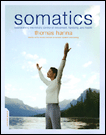 |
Somatics: Reawakening The Mind’s Control Of Movement, Flexibility, And Health by Dr. Thomas Hanna – $17.95Learn about the “Red Light” and “Green Light” muscular stress reflexes that distort our bodies. Discover the “Trauma Reflex” that causes our bodies to tilt. Read about the medical consequences of chronic muscular contraction. Includes the eight Somatic Exercises which erase the damaging effects of stress and trauma and maintain daily flexibility and comfort. |
In-stock CDs by Thomas Hanna
Somatic Exercises™ for the Lower Back – $40.00 |
Somatic Exercises™: Freeing the Whole Body from Center to Periphery – $30.00 |
Somatic Exercises™ for Delicate Backs – $30.00 |
Somatic Exercises™ for Full Breathing – $30.00 |
Somatic Exercises™ for Rounded Shoulders and Depressed Chests – $30.00 |
Somatic Exercises™ for Protruding Bellies – $30.00 |
Somatic Kinesiology – $30.00 |
Thomas Hanna HSE CD Series Product Reviews
A User’s Guide to Reviewer Notes by John Loupos
Herein is a guide to, and review of, Hanna Somatic Education lesson series available on electronic media. These reviews of HSE guided movement sessions are designed to give potential listeners some disclosure of content and quality in order to help you with your purchasing decisions. They will also serve as a guide, in the event that you possess multiple sets of lesson series (recommended), as a quick reminder of which lessons can be found and where. All guided movement series, except as noted, are by Thomas Hanna. Most guided sessions run about thirty minutes, and all were recorded before a live audience. All were originally recorded on cassette. Consequently, in transferring from cassette to CD format the discrepancies in recording times makes for some less than fully clear boundaries between lessons. Throughout these series, Hanna is at his best – a real tour de force – when his delivery is patient and measured, articulate and precise. Occasionally, he suffers brief lapses in these regards, where he comes across sounding more like an impatient drill sergeant than an expert communicator, which can detract from ease of listening. But, mostly, Hanna presents as an extraordinarily gifted orator and a most helpful teacher. In a few, rare, instances, sound quality suffers due to the live format as Hanna gravitates nearer to or away from his microphone (apparently he wasn’t wearing a lapel mike). I must stipulate that the pedestrian titles under which these various series of guided lessons are marketed represent something of both a misnomer and a misrepresentation. In each case, i.e. ?Somatic Movements for Feet, Knees and Pelvis? really ought to be retitled, ?Amazing Somatic Movements to Help You Achieve Absolutely Fabulous Feeling Feet, Knees and Pelvis!!!?, in order to do fuller justice to their respective content. I encourage shoppers not to be put off by any mundane sounding titles in choosing your CD series. I use a star * system to rate each individual lesson. Stars are awarded taking into account 1/ ?what’ is taught (content), and 2/ ?how well’ it is taught (quality). In descending order, ***** is outstanding, **** is very good, *** offers good information, but the same lesson is taught better elsewhere or the delivery is lacking, ** weak information/weak delivery, * don’t bother. In a few cases I may indicate a personal favorite with an extra (*). In several cases of seeming redundancy, I compare the relative merits of same lessons repeated in different series. Please note that despite the ostensible redundancy of similar lessons occurring in multiple series, Hanna often ?tweaks’ his guidance to ensure its specificity to the lesson immediately at hand, making even redundant lessons well worth the listen. Reviews also indicate the length of each lesson, and a guesstimated percentage,%, of theory/discussion versus actual guided movement. Happy listening. Reviewer – John Loupos.
Myth of Aging Series 8 lessons
(see Review Guide for explanation of ratings, i.e. T% / M%) These 8 core exercise patterns are regarded as the HSE foundation practice, and are the very same movement patterns as depicted in Hanna’s book, ?Somatics.? Many of these patterns, in fact, are recycled into other movement series, sometimes with small but significant changes in their details or delivery. This series will be many listeners’ first experience of Thomas Hanna as a speaker. His eloquence and articulation as an orator (gradually making an intelligent case for his particular approach through a mix of theory and guided movement), utterly engages listeners to become trusting fans. Here follows a lesson by lesson review. Lesson 1. 29:51. In this lesson Hanna starts with self sensing exercises to teach Green Light (Landau) reflex via the Arch and Flatten. He goes on to explore the reciprocal role (Red Light reflex) of the abdomen as the two opposites balance each other. Also covered are the details of diagonal and bilateral arching variations performed from a prone position. Lesson 1 concludes with the Arch and Curl. 50% theory/50% movement. ***** Lesson 2. 32:02. Lesson 2 centers on the flexor muscles of the abdomen and their relationship with the muscles of the back. Includes very good theory on the propensity for abdominal tightness. Exercises include single side and contralateral Arch and Curl, as well as with the feet raised off the floor. 70%, 30%. ***** Lesson 3. 32:08. This lesson focuses on the muscles of the sides of the body. Both sides are covered. Lying on either side listeners lift the head and/or foot laterally, to open up the ribs and address any tendencies toward scoliosis or trauma posture. A second movement pattern teaches ?X’ing.? From a supine position, listeners progressively extend each limb, in turn, to become longer. 40%, 60%. ***** Lesson 4. 31:53. Lesson 4 focuses on the muscles of the trunk. Several patterns comprise this segment. In brief: 1/ while supine, cross one leg over the other and let the weight of the top leg bare down as it pulls both legs in its direction. 2/ Practice an arm steeple w/ knees bent. 3/ Repeat #1 while extending opposite arm up along floor. 4/ Then do reverse side #s 1-3. 5/ Combine leg cross w/ steeple for trunk twist, R-side, then L-side. 6/ Finish with twisting/wringing. 20%, 80%. ***** Lesson 5. 30:58. For the muscles of the hip joints and legs. This session starts with a recap of excerpts (Cat Stretch) from lessons 1-4. Lesson 4, proper, entails inversion and eversion of the feet, ankles, and legs from a supine position. 50%, 50%. **** Lesson 6. 30:06. Lesson 6 focuses on the neck and shoulder muscles. Utilizing a progressive series of twisting/spiraling patterns, executed from a sitting position, this lesson adds length and flexibility to one’s rotational abilities. Some of the components are quite challenging in the counter-intuitiveness of their execution. Listeners are guided on the left side only and presumed able to repeat the mirror these patterns on the right. This may take some practice, unless you are adept at substituting right for left while listening to the guided version. 30%, 70%. ***** Lesson 7. 29:30. This lesson focuses on breathing in the fullest manner possible, alternately from supine, lateral and prone positions. Unlike other breathing methods that offer ?techniques’ for breathing, this method teaches how to free the body in order to facilitate full breathing. These lessons represent a rare exception to the usual HSE approach, typically characterized by slow and methodical movements, in being less geared toward proprioceptive enhancement (process) and more toward result. Hanna’s theory is excellent, even (dare I say) ?inspiring’. An invaluable adjunct for anyone involved in conscious breathing disciplines. 50%, 50% ***** (*) Lesson 8. 28:00. In this final lesson listeners start supine on the floor, progressively simulating the actions of walking, absenting the force of gravity on an erect posture, before finishing up with standing up and walking about. Unfortunately, Hanna seems hit and miss in his delivery of this lesson as he occasionally struggles to secure the compliance of members of his live audience. The lesson content is valuable, but Hanna’s guidance is less meticulously clear than in previous lessons, and may even leave some listeners unsure or anxious as to whether they’ve gotten the lesson correctly. 40% theory/60% movement. ***
Delicate Backs 6 lessons
(see Review Guide for explanation of ratings, i.e. T% / M%) Lesson 1. 30:03. The first lesson in this series begins with a very nice movement variation to Arch and Curl, in exploring the Landau Reflex. You will alternately articulate the six points while lying supine; occiput, tailbone, left and right hips, and left and right shoulders. Once these six points have been established, there follow assorted combinations and variations on articulating these points in relationship to the floor and each other. Theory 30%, Movement 70%. ***** Lesson 2. 47:08. Lesson 2 addresses the differential/rotational ability of the shoulder and hip, on the right side first, then the left. Working from a lying-on-the-side position, differentiations start with isolated shoulder movements. Then the movements combine for shoulder circles in either direction. Attention shifts to the right hip, utilizing the same strategy. Then the shoulder and hip combine for tandem and anti-tandem patterns. (Similar to Lesson 1 of Legs and Hip Joints series and Lesson 4 of the Rounded Shoulders/ Depressed Chests series.) 20%/80%. ***** (*) Lesson 3. 33:39. This lesson has the listener lying face down, the face turned left with the right cheek on the back of the right hand (not to be confused with Lesson 1 in Myth of Aging). A series of back lengthening movements follow. Reverse to opposite side. Includes prone knee tossing. 40%/60%. **** Lesson 4. 32:26. Learn how to undulate your neck and back in Lesson 4. Excellent guidance on how to increase your range of motion in moving the spine along a front/back axis, arching back further or fold/flexing more fully forward. (Similar to Lesson 5 in the Full Breathing series, also to Lesson 4 in the Protruding Bellies series and, and also Lesson 2 in the Rounded Shoulders/ Depressed Chests series.) 30%/70%. ***** Lesson 5. 32:24. Lesson 5 has listeners on their backs with knees bent. This lesson focuses on increasing one’s capacity for internal and external rotation of the knees and legs as a mean of opening and lengthening the back from the lower extremities up. This lesson culminates in the same twist/wringing pattern taught in Lesson 4 of the Myth of aging series. Despite the redundancy, the slightly different approach to a same end pattern makes for a delightful variation. 50%/50%. ***** Lesson 6. 33:09. The final lesson in this series starts off with some delightful and evocative, albeit short-lived, imagery of the vertebral components as links in a chain, an approach that effectively highlights spinal differentiation. The session concludes with assorted flexing patterns (ala Lesson 2 in the Myth of Aging series). This lesson, though perfectly adequate to the task, leaves me wishing Hanna had done just a little more in developing the imagery based articulations he started out with. 40%/60%. ****
Feet, Knees & Pelvis. 6 (or 8?) lessons
(see Review Guide for explanation of ratings, i.e. T% / M%) Note: In a departure from other lesson series formats, the first 4 lessons below may actually be considered as one long lesson with convenient, if arbitrary, intermissions. In some cases these intermissions correspond to CD track changes, in other cases not. Thus the initial 4 lessons (on 2 CDs) are not clearly delineated as separate presentations. Lessons 5 and 6 (presumably, as they occur over the next 2 CDs) seem, again, as one lesson and separate from the first four lessons. In any case, this entire lesson series is presented over 4 CDs, instead of the usual 3 CDs as is the case for all other 6 lesson formats. All this might seem a bit confusing (it confused me) if you’re accustomed to an orderly progression of lessons such as other Hanna series offer. CDs #3 & #4 do not spotlight Hanna at his best. Happily, the lessons covered on the first 2 CDs make for an excellent series. CD Lesson 1. 47:02. The first lesson in this series explores the intricacies of the foot’s design in a manner reminiscent of the corresponding hand exercises in Lesson 1 in the Hand, Wrist, and Shoulders series. Every bit as excellent as that hand lesson, Thomas Hanna’s patient and comprehensive attention to the details of foot anatomy and individuated function will leave your feet feeling fully alive and thoroughly renewed. Days after following along to this lesson my feet still feel uncharacteristically alive. This first lesson is longer than usual, running about 45 minutes. 50%/50%. ***** CD Lesson 2a. 22:55. Lesson 2 (shorter than usual) begins with toe interlacements, and then shifts into ankle flexion and extension maneuvers. 50%/50%. **** CD Lesson 2b. 21:12. This lesson picks up right where the previous one leaves off, continuing to blur the boundaries between feet, legs and whole body. Here you’re encounter heel and head differentiations, and begin to distinguish the legs and hips as moving distinct from the body. 50%/50%. **** CD Lesson 3. 43:45. Listeners will gain a deeper and more practical understanding of how the feet are mutually implicated in the freedom with which you can move your ankles, legs, and pelvis, even up through to the back, neck, and eyes. Initial movement patterns guide listeners in hip/pelvis/foot rotational articulations. The latter part of this lesson begins to address pelvic articulations along both an extended and flexed lateral plane. This lesson culminates in an impressive cross-knee’d ?walking’ pattern. 50%/50%. ***** (*) CD Lesson 4. 41:06. This lesson, initially reminiscent of the ?back arching/lengthening pattern’ of Lesson 3 in the Delicate Back Series, is decidedly less inspired, and less rewarding, than the lessons preceding. As this lesson develops it repeats some of the ?hamstring lengthening patterns’ taught in Lesson 7 of the Low Back series. In both cases the referenced alternate pattern sources are recommended over this lesson. Hanna’s theory and articulation, both, run hot and cold in this lesson. 50%/50%. *** CD Lesson 5. 29:40. From a supine position listeners are guided in lengthening the hamstrings. This lesson, also, is reminiscent of the ?hamstring lengthening patterns’ taught in Lesson 7 of the Low Back series, though it entails patterns which were not already covered in Lesson 4 of this series. Hanna’s attempts at philosophical whimsy are hit and miss and seem strained at times. 70%/30. *** CD Lesson 6. 25:16. I’ve combined these two tracks because Track 2 is only 7 minutes long. This CD starts off as a continuation of the previous track and offers little, in terms of movement, not already covered on the two previous tracks. It includes some promising theory on full abdominal breathing which Hanna fails to followup on, and concludes with an equally brief final comparison of moves that were covered earlier in Lesson 1, Track 1 above. 80%/20%. **
Freeing the Whole Body from the Center to the Periphery. 6 lessons
(see Review Guide for explanation of ratings, i.e. T% / M%). Lesson 1. 31:20. This initial session amounts to a reissue of Lesson 1 in the Myth of Aging Series, albeit a worthy rendition. Hanna, who on occasion can be a bit over-animated, is at his best here, guiding listeners in a manner that is soothing, methodical and meditative. Patterns include supine back arching, Arch & Flatten/Curl, and diagonal curling. 40&/60%. ***** Lesson 2. 47:37. Lesson 2 addresses the Startle Reflex. Hanna presents a compelling portrayal of how the startle Reflex is elicited and how it manifests as an habituated pattern. Listeners are guided, briefly, in opening the abdomen and chest from a side lying position, w/ lateral arm extensions, and more comprehensively in small moves to explore how the Startle Reflex can variously be excited. Very good information and movement. 60%/40%. **** Lesson 3. 35:35. This lesson entails the shoulder and hip articulations covered Lesson 2 in the Delicate Backs series. Also included are ?X-stretches’ done from a supine position, ala Lesson 3 in the Myth of Aging series. In both of these cases I prefer Hanna’s rendition herein (see Lesson 1 review above). 30%/70%. ***** Lesson 4. 44:22. This session emphasizes ?walking’ from a supine position, with an exploration of the relationship between upper back/arms/shoulders and lower back/hips/waist. Also covered are aspects of Lesson 4 from the Myth of Aging series. 30%/70%. **** Lesson 5. 33:02. From a laying-on-one’s-side position, listeners are guided, initially, in a lateral torso stretch, ala Lesson 3 in the Myth of Aging series. Then listeners lay supine and alternately invert/evert either arm while extended overhead in a most excellent movement pattern. 30%/70%. ***** (*) Lesson 6. 46:55. Hanna finishes up this series with a nice smooth rendition of the Hip and Waist patterns from Lesson 5 of the Myth of Aging series. This actually makes for a better version than the Myth of Aging version. 30%/70%. *****
Full Breathing. 6 lessons
(see Review Guide for explanation of ratings, i.e. T% / M%) Lesson 1. 30:37. Hanna begins Lesson 1 with a compelling argument for why conscious and deliberate breathing is so important. He follows with a detailed anatomical exploration underlying the mechanics of breathing, and gradually segues into the means by which Red Light, or Startle Reflex is triggered. The sole movement pattern taught is the corkscrew body twist excerpted from Lesson 4 in the Myth of Aging series. 80%/20%. **** Lesson 2. 33:25. Lesson 2 has listeners working from both lying-on-your-side positions. The top, lead, arm extends forward, up, over, and behind to open the chest for fuller breathing. Hanna waxes engagingly philosophical on the politics of freedom intermixed with the politics of breathing. (Similar to Lesson 4 in the Rounded Shoulders/ Depressed chests series.) 70%/30%. ***** Lesson 3. 31:34. Listeners start supine with legs crossed to lower legs to either side, ala Lesson 4 in the Myth of Aging series. Though this movement pattern is, ostensibly, redundant there are many useful details having to do with muscular function and engagement not covered in the earlier series. Hanna builds on this exercise to achieve a relaxed and lengthened abdomen for fuller breathing. 50%/50% **** Lesson 4. 30:28. In Lesson 4 listeners begin laying prone, tossing the bent legs side-to-side. Hanna builds on this pattern to progressively release muscles of the trunk and abdomen 40%/60%. **** Lesson 5. 28:25. Here you’ll start in a sitting position and explore your potential for extension and flexion along the sagittal plane, culminating in the Red Light protocol’s ?Flower’ pattern. Hanna vacillates between soothing guidance and barking at members of his live audience. Notwithstanding this distraction, the instruction makes for a very good lesson. (Similar to Lesson 4 in the Protruding Bellies series and Lesson 4 in the Delicate Backs series, and also Lesson 2 in the Rounded Shoulders/ Depressed Chests series.) 40%/60%. ***** Lesson 6. 33:09. In a fashion somewhat reminiscent of Lesson of 5 in the Myth of Aging series, this concluding lesson has listeners experimenting with powerful executed breathing patterns in order to fully develop their respiratory potential. The assumption throughout this series is that optimally healthy breathing is primarily a matter of deleting impediments to same, an eminently practical approach. By the time Hanna finally does get around to serious breathing he does so in a way that intelligently links the breath back to movement patterns taught in the preceding lessons. 50%/50%. ***** (*).
Hands, Wrists, Elbows, and Shoulders. 6 lessons
(see Review Guide for explanation of ratings, i.e. T% / M%). Note: Lesson breaks are unclear in some cases. Lesson 1. 45:16. Reminiscent of Lesson 1 from the Hips, Thighs, Lower Legs, and Feet series that focus on the intricacies of the feet, this lesson goes beyond brilliance. Hanna’s guidance will have you marveling over your own hands, both theoretically in terms of their functional mechanics and complexity, and in terms of how mahvelous your hands will feel as a result. 50%/50%. ***** (*) Lesson 2. 22:01. Lesson 2 emphasizes individual and combined finger articulations, often combined with imaginative visualizations. Hanna’s political musings seem a bit forced at times, yet in essence they’re every bit as apropos today as they were back in the 80’s. 70%/30%. *** Lesson 3. 46:22. This lesson employs some fascinating imagery in which Hanna guides listeners in moving their arms, ?as if stroking a violin.? The movements are good, but the imagery almost seems to distract from the self-sensing it is designed to elicit. Ultimately, the movements redeem the guidance, but this one left me feeling that the movements were there to justify the verbiage rather than vice versa. 70%/30%. *** Lesson 4a&b. 45:15. Lesson 4 starts with the hands, wrists, and arms in various forms of differentiated interlacement, and proceeds to reaching with either arm around and behind, or across and behind, the head for some truly excellent shoulder opening. 50%/50%. ***** (*) Lesson 5a&b. 37:16. Lesson 5 starts with listeners continuing to experiment with fascinating wrist/arm/shoulder articulations, first, while lying supine, and then from a sitting posture. 40%/60%. ***** Lesson 6. 33:29. This session is reminiscent of Lesson 6 in the Myth of Aging series, connecting freedom of movement in the shoulders with freedom of movement in the trunk and torso. This rendition is slightly more detailed in its neuromuscular differentiations. Presentation is primarily on one side only (there is a condensed visualization of the reverse side), so listeners will need to reverse the actual movements on their own. 40%/60%. *****
Legs and Hip Joints. 6 lessons
(see Review Guide for explanation of ratings, i.e. T% / M%) Lesson 1. 46:29. This is a longer than usual lesson. Lesson 1 addresses the differential/rotational ability of the shoulder and hip, on the right side first, then the left. Working from a lying-on-the-side position, differentiations start with isolated shoulder movements. Then the movements combine for shoulder circles in either direction. Attention shifts to the right hip, utilizing the same strategy. Then the shoulder and hip combine for tandem and anti-tandem patterns. Covers both sides. Once the opposite side has been completed Hanna has listeners experimenting with a delightful bilateral variation of the same movement pattern from a supine position. (Similar to Lesson 2 of Delicate Back series, and Lesson 4 of the Rounded Shoulders/ Depressed Chests series.) 50%/50%. ***** Lessons 2 & 3 combined. 47:13. This is another longer than usual lesson. From a supine position listeners are guided in progressively opening and extending the body from one hip, up through the back, into and through the opposite shoulder, and extending up and along the lengthened opposite arm, before ?reversing’ the movement, and then repeating on the opposite side. This is followed by a final, delightful and intelligent, culminating movement pattern for the coup de grace, performed on both sides. Rather than leave it at that, Hanna opts to finish by guiding listeners in a mesmerizing visualization. The theme of legs and hips aside, this is a superb exercise for releasing back pain/tension, the visualization component notwithstanding. In fact, this pattern strikes me as more probable candidate for inclusion in either of the series for the back. 30%/70%. *****(*) Lesson 4a. 46:48. Here Hanna has listeners exploring the relationship between tightness and limitation in the hips and knees with the more central areas of the body. Excerpts from Lesson 4 in the Myth of Aging series are added into the mix, along with other trunk rotations. According to the standard of Hanna’s other guided sessions this feels somehow less directed and nondescript. 50%/50%. *** Lesson 4. 46:58. Starting from a supine position, you’ll learn how to lengthen your hamstrings through a series of movement patterns that extend the legs while simultaneously flexing the head and abdomen. (Similar to Lesson 2 in the Protruding Bellies series, and Lesson 7 in the Low Back series). 50%/50%. ***** Lesson 5a&b. 45:29. [CD #3 33:30] Here listeners lie on their side and articulate either the topside leg or its same-side hip (and body) forward and back so as to differentiate. Gradually, advance to simultaneous front/back articulations, with knee and ankle flexion/extensions to achieve an ?x’-rated torsion and twist from leg to back and torso for increased range of leg flexion. Hanna finishes with a nice leg extension pattern from a prone, and then a hands and knees, position to balance the earlier flexions. Very effective patterns. 30%70%. *****(*) Lesson 6. 47:28. Lesson 6 is basically a reissuance of Lesson 4 from the Myth of Aging series. Good theory on proprioceptive literacy. 70%/30%. ****
Lower Back 8 lessons
(see Review Guide for explanation of ratings, i.e. T% / M%) Throughout the series Hanna is soft spoken and soothing in his delivery. Lesson 1. 29:49. In this first of eight lessons you meet Roy whose back has ?gone out’, and must perform the very same movements taught earlier in Lesson 1 of the Myth of Aging series in order to find relief. The redundancy of this lesson notwithstanding, Hanna is at his best here in issuing a better-than-original rendition of that earlier lesson, replete with excellent theory on modern industrial somatic ailments, Landau Reflex, etc. 60%/40%. ***** (*) Lesson 2. 31:12. Lesson 2 centers extension and flexion along the sagittal plane from various starting positions. Excellent presentation. (Similar to Lesson 4 in the Protruding Bellies series and Lesson 5 in the Full Breathing series, and also Lesson 2 in the Rounded Shoulders/ Depressed Chests series.) 50%/50%. ***** Lesson 3. 31:02. Here Hanna guides supine listeners on a journey in self sensing. A good listen the first time through or if you’re not already well accustomed to self sensing. Otherwise, it may feel a bit drawn out. 95%/5%. *** Lesson 4. 28:18. This is similar to Lesson 4 in the Myth of Aging series. The emphasis is on freeing the muscles of the trunk. This is a worthy rendition. 50%/50%. **** Lesson 5. 29:40. In this session Hanna focuses on the importance of full abdominal breathing as a central theme while enacting specific movement patterns. The actual movement patterns are recycled from Lesson 2 in the Myth of Aging series, but the emphasis on breathing and self-sensing render the redundancy moot. Very good theory and good commentary on neuro learning tracks. 80%/20%. ***** Lesson 6. 26:30. Lying prone, listeners are guided in how to become longer. Alternately, and in combination, you will extend the arms and legs away from the core. This is a truly exceptional lesson. 50%/50% *****(*) Lesson 7. 30:09. This is a very good lesson for lengthening the hamstrings and large extensor muscles. (Similar to Lesson 2 in the Protruding Bellies series, and Lesson 4 in Legs and Hip Joints. I found this the most listener friendly of the three renditions.) 50%/50%. ***** Lesson 8. 27:14. In the concluding lesson to this series Hanna has listeners lying supine with the knees bent up in various positions and rolling forward and backward along the spine. He finishes with the Arch and Curl pattern and simple side-to-side knee flopping. 50%/50%. ****
Neck, Jaw, and Skull. 7 lessons
(see Review Guide for explanation of ratings, i.e. T% / M%) Lesson 1. 29:59. This first lesson is long, nearly 60 minutes. This lesson starts with very good theory on the functionality of the muscles of the head and neck in making a strong case for the movement patterns that follow. Hanna proceeds to excerpt from the back arching movements from Lesson 1 in the Myth of Aging series to focus. initially, on self-sensing of the head, neck, shoulder, and back. 70%/30% **** Lesson 2. 29:10. Lesson 2 is comprised entirely of guided visualization and self sensing of one’s ?internal geography?. A fine lesson for those not already accustomed to quiet self sensing, or for individuals inclined toward this sort of vegetation. 100%/0% (note: no movement per se, but this is participatory). *** Lesson 3. 29:32. This lesson focuses, more practically, on the muscles and mechanical nuances of the temporal mandibular joint (TMJ). This is the kind of lesson that everyone ought to do at least once (if only for the functional anatomy lesson). It should be of immeasurable value for anyone with TMJ issues. Quote of note: listen for Hanna’s quip on Mick Jagger. 60%/40%. **** Lesson 4. 30:34. In this lesson Hanna continues our anatomy lesson tutoring on the function and structure of the jaw. From there, he proceeds to guide listeners in differentiating the muscles of the eyes, neck, and chin/jaw. Very good for alleviating habituation/tension in the neck and/or eyes. 50%/50%. ***** Lesson 5. 30:17. In what looks to be yet another round of quiet internal self sensing, this session, though subtle, is actually quite a bit more participatory than earlier visualization-type sessions. Hanna guides listeners deeply within to explore the functional underpinnings of tension headaches. 60%/40%. **** Lesson 6. 31:10. This session starts with a personable anecdote of Hanna’s early days with Moshe Feldenkrais. Movement entails listeners lying supine and lifting arm, or arms, skyward. Excellent neck differentiations follow. 40%/60%. ***** Lesson 7. 20:38. Lesson 7 wraps up with some ?blitheful’ thrashing about, rolling side-to-side from a supine position, while differentiating the functions of the head, neck and limbs. Hanna concludes with another, short, round of guided self sensing. 50%/50%. *****
Protruding Bellies. 6 lessons
(see Review Guide for explanation of ratings, i.e. T% / M%) Lesson 1. 32:18.Working from supine, on-the-side, and prone postures, Lesson 1 explores the manner and degree to which protruding bellies can result from voluntary factors, i.e. chronic muscular contraction in the lower back. 50%/50%. ***** Lesson 2. 35:43. Lesson 2 lengthens the hamstrings and large extensor muscles of the back, trunk and neck in order to ?fold’ the body. This is a very thorough and comprehensive lesson. (Similar to Lesson 4 in the Legs and Hip Joints series, and Lesson 7 in the Low Back series). 40%/60%. ***** Lesson 3. 30:41. This lesson starts with some good theory on stretching. From there it proceeds to focus on release of tension from the abdominal/trunk area. Hanna utilizes Lesson 4 from the Myth of Aging series to accomplish this. This is a very good rendition of that earlier lesson. 60%/40%. ***** Lesson 4. 31:07. Lesson 4 has you improving your capacity for extension and flexion along a sagittal plane from various positions. Very effective lesson. (Similar to Lesson 2 in the Low Back series and Lesson 5 in the Full Breathing series, and also Lesson 2 in the Rounded Shoulders/ Depressed Chests series.) 50%/50%. ***** Lesson 5. 28:38. This is a wonderful lesson in which Tom Hanna guides listeners in moving their pelvis according to north/south and east/west axes, working in geometrical patterns. He applies this approach from varied starting positions. As an aside, this lesson served as an inspiration for this reviewer’s own set of guided lessons available on another CD (see ?Movements for Sensing and Freeing the Sacrum and Cranium,? Loupos). 40%/60%. *****(*) Lesson 6. 37:13. Hanna conscripts patterns from Lessons 1 and 2 from the Myth of Aging series, combined with some clever variations for achieving a flatter back (and a less protruding belly), along with a feeling of being taller. He subsequently introduces some brilliant variations on the undulatory movements of Lesson 2 above. 40%/60%. *****
Rounded Shoulders & Depressed Chests. 6 lessons
(see Review Guide for explanation of ratings, i.e. T% / M%) Lesson 1. 34:39. Hanna begins with very good theory on the Startle Reflex and ensuing tendency toward Red Light posture. He follows guiding listeners in actualizing their experience of Red Light posture. This lesson will leave you with little question as to what Red Light posture is and how it feels for those who suffer from it. 70%/30%. ***** Lesson 2. 30:35. Lesson 2 has listeners continuing with their exploration of Red Light posture, here from a prone position. Hanna gradually segues into flexion and extension patterns along a sagittal plan. (Similar to Lesson 4 in the Protruding Bellies series and Lesson 4 in the Delicate Backs series, and also Lesson 5 in the Full Breathing series.) 60%/40%. ***** Lesson 3. 28:16. Ala Lesson 4 in the Myth of Aging series, this lesson entails cross-legged trunk wringing combined, eventually, with steeple-positioned arm patterns. 40%/60%. ***** Lesson 4. 31:44. During this lesson listeners will lie on their sides and practice rolling the shoulders and/or hips in differentiating patterns. (Similar to Lesson 1 of the Legs and Hip Joints series, and Lesson 2 of the Delicate Backs series.) Also included is a pattern of arm movements to open the chest/ pectoral muscle. (Similar to Lesson 2 in the Full Breathing series.) 40%/60%. ***** Lesson 5. 29:08. Hanna starts this lesson off with a rendition of the back arching movements, performed from a prone position, ala Lesson 1 in the Myth of Aging series. He proceeds into a diagonal limb-lifting pattern, involving some very nice head, neck and pelvis work. 40%/60%. ***** (second half of this lesson gets the extra (*).) Lesson 6. 28:10. Hanna begins with a wrap up of material covered in lessons 1-5. He then presents an excellent, next, lesson for opening the chest, shoulders and upper back. You too will feel like a disdainful, yet well-postured, Spanish flamenco dancer by the time you finish this lesson. Hanna will have you looking back over your shoulders and down at your own buttocks. 40%/60%. *****(*)
Somatic Kinesiology. 6 lessons
(see Review Guide for explanation of ratings, i.e. T% / M%) In contrast to Hanna’s other guided series which teach movement patterns for enhanced neuromuscular control, this series of lessons deals with identifying skeletal structures and muscular functions. Its six lessons offer exceptional guidance in learning about how your body works. This reviewer learned more about the practical functionality of the body’s musculoskeletal system from the first five of these six lessons than from all the many textbooks and reference manuals at my disposal. Lesson 1. 36:38. Who would of thought we could find so much to learn in, not to mention be entertained by, the creases and other physiological minutia of our palms, hands, wrists, and arms? Hanna comes through here. with tidbit after tidbit of food for thought on the intricacies of our most definedly human parts. Notably, he does a nice job of explaining how carpal tunnel syndrome stems from the back and shoulder. 60%/40%. ***** Lesson 2. 32:08. Lesson 2 starts with its focus on the skull and muscles associated with the skull, including the SCMs and the muscles of the jaw, mouth, and face. Very thorough, hands-on, and instructive. 50%/50%. ***** Lesson 3. 30:54. This lesson focuses on the intricacies of the feet, ankles, and lower legs. Wonderful and very practical theory. 40%/60%. ***** Lesson 4. 34:42. Lesson 4 addresses the shoulders. As with the previous lessons, Hanna’s hands-on approach lends deeper meaning to this anatomical exploration. 50%/50%. ***** Lesson 5. 32:24. Hanna segues from lesson 4 (shoulders) immediately into the hips. This lesson provides a detailed foray in the muscular intricacies of the hips, legs and pelvis. 50%/50%. ***** Lesson 6. 32:30. Here Hanna focuses on the trunk. This concluding session, in contrast to the ones that precede, borrows an actual HSE movement pattern, Lesson 2 from the Myth of Aging series as well as excerpts from others, as a basis for its lessons. 40%/60%. *****
Optimal Health Products
ASTAXANTHOL – $54.00ASTAXANTHOL (pronounced asta-zan’-thol) is a uniquely designed, nutriceutical formulation that is an extremely potent, highly bio-available, broad spectrum, anti-inflammatory complex that provides significant, anti-aging protection for the brain, eyes, heart, blood vessels, joints, skin, and all cells, tissues and organs from injury by free radical-induced oxidative stress, esp. that produced by toxic chemicals, and ultraviolet (UV) solar radiation. (more…) |

